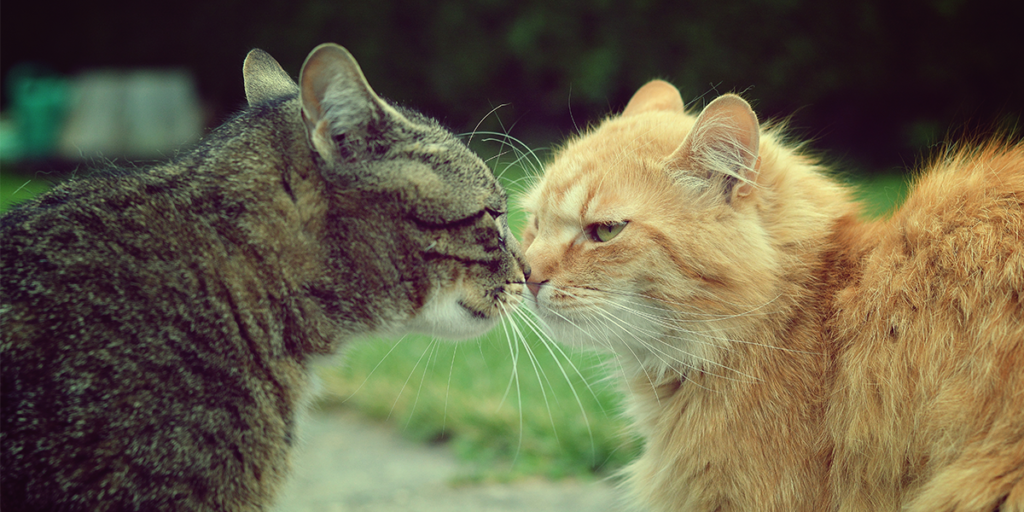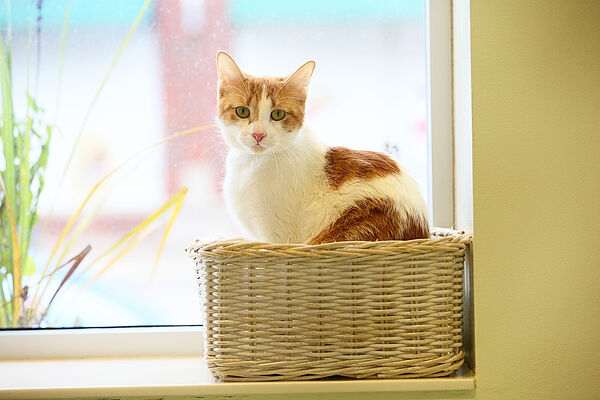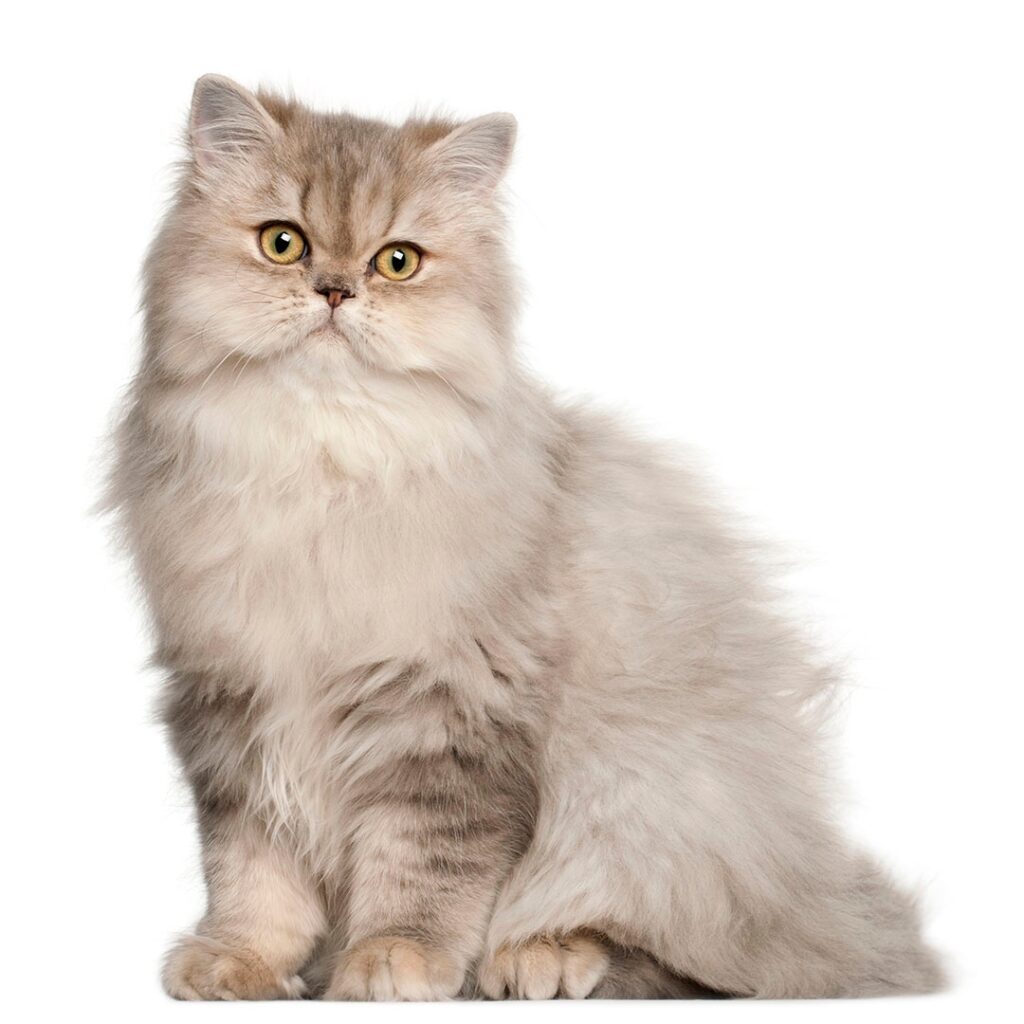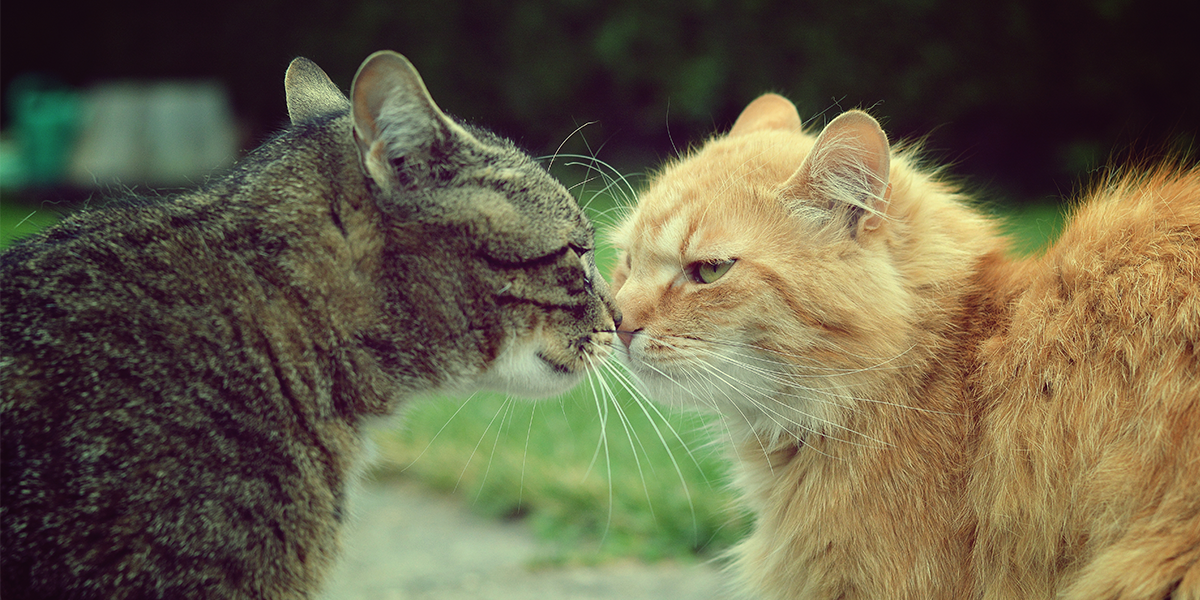So, you’re thinking about adding a new Persian cat to your family. That’s great! Persian cats are known for their luxurious coats and sweet personalities. But, introducing a new pet to your household can be a big decision. That’s why I’m here to provide you with some valuable information and tips on how to make the process as smooth as possible. In my upcoming article, you’ll learn about the best ways to prepare your home for your new furry friend, how to introduce them to existing pets, and the importance of establishing a routine. Plus, I’ll be answering some of the most common questions people have about Persian cats. Stay tuned for some helpful insights and expert advice.
Introducing a New Persian Cat to Your Family
Welcome to my blog, “Persian Cat Dude”! I’m excited to provide you with comprehensive and engaging content about Persian cats, and today we’ll be discussing the process of introducing a new Persian cat to your family. Bringing a furry friend into your home is a big decision, and it’s important to ensure a smooth transition for both your family and your new feline companion.

Origins of Persian Cats
Before we dive into the topic of introducing a new Persian cat, let’s take a moment to explore the history of these majestic creatures. Persian cats have a rich and fascinating background dating back to ancient times. They are believed to have originated in Persia (modern-day Iran) and were highly regarded for their luxurious coats and charming demeanor.
Evolution of Persian Cats
Over the centuries, Persian cats have undergone various changes in appearance due to selective breeding. Different breeders have focused on specific traits, resulting in distinct variations in facial structure, coat type, and coloration. These changes have contributed to the diverse range of Persian cat appearances we see today.

Popularity of Persian Cats
Persian cats have gained immense popularity and have become one of the most beloved cat breeds worldwide. Their enchanting looks, calm and gentle temperament, as well as their affectionate nature, make them an ideal choice for many cat lovers. Their popularity has led to an increase in Persian cat breeding and the availability of these beautiful cats in homes around the globe.
Characteristics of Persian Cats
Now that we have explored the history and popularity of Persian cats, let’s delve into their unique characteristics. Understanding their physical appearance, coat types and colors, as well as their temperament, will help you better prepare for bringing a new Persian cat into your family.
Physical Appearance
Persian cats are known for their distinct features, including their round faces, short noses, and expressive eyes. They have a sturdy and muscular build, with a medium-sized body. Persian cats have short, stocky legs and small, tufted paws. Their tails are fluffy and bushy, perfectly complementing their plush coats.
Coat Types and Colors
The Persian cat breed boasts various coat types, including longhair and shorthair varieties. The longhair Persian cats have a dense, silky coat that requires regular grooming to prevent matting. The shorthair Persian cats have shorter, less dense fur that is easier to maintain.
Persian cats come in a wide array of coat colors and patterns, ranging from solid colors like white, black, cream, and blue to bi-color and tabby patterns. The coat color possibilities are virtually endless, ensuring you’ll find a Persian cat that suits your preferences.
Temperament of Persian Cats
Persian cats are known for their sweet and gentle nature. They are typically calm, docile, and enjoy a peaceful and quiet environment. Persian cats are well-suited for families and individuals seeking a companion who prefers a relaxed lifestyle. They love to be pampered and are content spending their days lounging and receiving affection from their human family members.

Choosing a Persian Cat
When it comes to choosing a Persian cat, there are a few factors to consider. Whether you opt for a kitten or an adult Persian cat, as well as the gender of your new feline friend, can impact the dynamics of introducing them to your household.
Kitten or Adult Persian Cat
Deciding between a kitten and an adult Persian cat depends on your personal preferences and circumstances. While kittens require more time and effort for training and socialization, they also offer the joy of watching them grow and develop their unique personalities. Adult Persian cats, on the other hand, may be more settled and require less training but have already established their preferences and habits.
Male vs Female Persian Cats
Another factor to consider is the gender of your new Persian cat. Male and female Persian cats generally exhibit similar temperaments, but there can be slight differences in their behavior. For example, male Persian cats might be slightly more independent and adventurous, whereas female Persian cats may be more reserved and nurturing. Ultimately, choose a gender that aligns with your family dynamics and preferences.
Finding a Reputable Breeder
When adopting a Persian cat, it’s crucial to find a reputable breeder who prioritizes the health and well-being of their cats. A responsible breeder will provide you with necessary health certifications, genetic testing, and vaccination records. They will also offer guidance and support throughout the adoption process and be available to answer any questions or concerns you may have.
Preparing for a New Persian Cat
Before bringing your new Persian cat home, make sure to create a welcoming and safe environment for them. Setting up their living space, gathering essential supplies, and introducing them to any existing pets are all important steps in ensuring a smooth transition for your new furry family member.
Setting Up a Persian Cat’s Living Space
Designate a quiet and comfortable area in your home for your new Persian cat. Include a cozy bed, litter box, scratching post, and a few toys for entertainment. Persian cats appreciate having their own space to retreat to when they want some alone time.
Essential Supplies for a Persian Cat
To cater to your Persian cat’s needs, gather essential supplies such as food and water bowls, a high-quality cat food appropriate for their age and health, litter and litter box, grooming tools, and a sturdy carrier for trips to the veterinarian or traveling.
Introducing Other Pets to the Persian Cat
If you have other pets in your home, it’s important to introduce them to your new Persian cat gradually. Keep them separated initially and gradually allow supervised interaction. This allows your pets to adjust to each other’s presence and minimize any potential conflicts. Remember to provide each pet with their own space and treat them all with equal love and attention.

Feeding and Nutrition for Persian Cats
Proper nutrition is essential for the overall health and well-being of your Persian cat. Providing a balanced and nutritious diet, considering any special dietary considerations, and managing their weight are important aspects of caring for your new feline companion.
Best Diet for Persian Cats
Consult with your veterinarian to determine the best diet for your Persian cat. High-quality commercial cat food that is specifically formulated for Persian cats is recommended. These diets often consider the breed’s unique needs, such as dental health and hairball control. Avoid feeding your Persian cat a solely homemade or raw food diet without proper guidance from a veterinary professional.
Special Dietary Considerations for Persian Cats
Persian cats may have specific dietary considerations, such as their tendency to develop dental problems and hairballs. To address dental health, provide them with dental treats or consider feeding a dry food diet that promotes dental hygiene. To prevent hairballs, regular grooming and incorporating hairball control formulations in their diet can be beneficial.
Avoiding Obesity in Persian Cats
Persian cats are prone to weight gain and obesity, which can lead to various health problems. Monitor their food intake and avoid overfeeding. A combination of portion control, regular exercise, and feeding a balanced diet will help keep your Persian cat at a healthy weight. Regular veterinary check-ups can help identify early signs of weight gain and address any concerns.
Grooming and Care for Persian Cats
Grooming is a crucial aspect of caring for Persian cats due to their long, luxurious coats. Daily grooming routines, bathing and cleaning techniques, and preventing matting and hairballs are essential for maintaining your Persian cat’s coat and overall well-being.
Daily Grooming Routine
Allocate time each day to groom your Persian cat. Use a wide-toothed comb or a slicker brush to remove knots and tangles from their fur. Pay close attention to areas prone to matting, such as behind the ears and under the belly. Gently clean their face with a damp cloth to remove any dirt or discharge.
Bathing and Cleaning Persian Cats
Persian cats may require periodic baths to keep their coats clean and free of excessive oils. Use a mild cat shampoo specifically formulated for Persian cats, and ensure the water temperature is lukewarm to avoid discomfort. It’s essential to dry them thoroughly to prevent chilling and matting.
Preventing Matting and Hairballs
Regular grooming helps prevent matting, which can be painful for Persian cats. Pay close attention to their coat and remove any tangles promptly. Additionally, a well-groomed coat minimizes the risk of hairballs. Consider using hairball prevention supplements or incorporating grooming products that aid in hairball control.

Health and Common Issues in Persian Cats
Persian cats, like any breed, may be prone to specific health concerns. Understanding genetic health concerns, ensuring routine veterinary care, and recognizing and treating common health problems will enable you to provide the best care for your Persian cat.
Genetic Health Concerns in Persian Cats
Persian cats may be predisposed to certain genetic health conditions, such as polycystic kidney disease (PKD), hypertrophic cardiomyopathy (HCM), and brachycephalic airway syndrome. Consulting with a veterinarian and ensuring proper genetic testing can help identify potential health issues and formulate appropriate preventive measures.
Routine Veterinary Care for Persian Cats
Regular veterinary check-ups are crucial for maintaining the health of your Persian cat. Vaccinations, deworming, flea and tick prevention, and dental care should be part of their routine healthcare regime. Additionally, annual wellness exams allow veterinarians to detect any potential health problems early on.
Recognizing and Treating Common Health Problems
Persian cats are susceptible to specific health problems, including respiratory issues, eye problems, and skin conditions. Keep a close eye on their breathing, monitor their eye health, and check their skin for any abnormalities. If you notice any signs of discomfort or unusual behavior, consult with your veterinarian for a proper diagnosis and treatment plan.
Training and Behavioral Needs of Persian Cats
Persian cats are generally well-behaved and have a calm demeanor. However, training them in litter box usage, teaching basic commands and tricks, and addressing any behavioral issues that may arise are important for maintaining a harmonious living environment.
Litter Box Training for Persian Cats
When bringing a new Persian cat home, ensure they are familiar with their designated litter box area. Provide a clean litter box with a type of litter your cat prefers. Show them the location of the litter box and gently place them in it after meals or naps until they associate it with their bathroom needs.
Teaching Basic Commands and Tricks
Persian cats are intelligent creatures and can be trained to respond to basic commands and perform simple tricks. Using positive reinforcement techniques, such as treats and praise, you can teach your Persian cat commands like “sit,” “stay,” or “come.” Keep training sessions short and enjoyable, and be patient as each cat learns at their own pace.
Addressing Behavioral Issues in Persian Cats
Occasionally, Persian cats may develop behavioral issues, such as excessive meowing, scratching furniture, or aggression. Addressing these issues requires patience, understanding, and sometimes professional guidance. Identifying the root cause of the behavioral problem and implementing positive reinforcement techniques can help modify their behavior and create a harmonious living environment.
Exercise and Playtime for Persian Cats
While Persian cats may enjoy a relaxed lifestyle, regular exercise and playtime are still vital for their physical and mental well-being. Providing enrichment activities, determining whether to allow outdoor or indoor activities, and promoting physical fitness will ensure your Persian cat remains happy and healthy.
Providing Enrichment for Persian Cats
Engage your Persian cat with interactive toys, scratching posts, and puzzle feeders to prevent boredom and encourage mental stimulation. Rotate toys regularly to keep their interest piqued and provide opportunities for exploration and play.
Outdoor vs Indoor Activities for Persian Cats
The decision to allow your Persian cat outdoor access or confine them indoors depends on various factors, such as your living environment and potential risks. If allowing outdoor access, ensure they are supervised or have access to a secure outdoor enclosure. If keeping them indoors, provide ample play opportunities and a stimulating environment to prevent boredom.
Promoting Physical Fitness in Persian Cats
Persian cats may not have the same exercise requirements as more active breeds, but it’s still important to encourage physical activity to maintain a healthy weight and overall fitness. Engage in interactive play sessions using toys that promote exercise, such as feather wands or laser pointers. Additionally, provide scratching posts and climbing structures to help them stretch and stay active.
Traveling and Transportation with Persian Cats
Whether you’re planning a trip or need to visit the veterinarian, traveling with your Persian cat requires careful preparation and consideration. Taking steps to ensure their comfort, safety, and managing stress during travel will make the experience more enjoyable for both you and your feline companion.
Preparing for Travel with a Persian Cat
Before embarking on a trip, ensure you have a secure and comfortable carrier for your Persian cat. Familiarize them with the carrier by leaving it open, placing treats or toys inside, and gradually coaxing them to enter. This encourages positive associations with the carrier and reduces stress during travel.
Carriers and Safety Measures for Persian Cats
Select carriers that provide ample ventilation, secure closures, and enough space for your Persian cat to comfortably stand and turn around. Placing a soft blanket or familiar bedding inside the carrier can provide added comfort during the journey. Secure the carrier in your vehicle to prevent it from shifting during transit.
Managing Stress during Travel
Traveling can be stressful for Persian cats, so it’s important to take steps to minimize their anxiety. Covering the carrier with a light, breathable cloth can create a sense of security. Additionally, spraying calming pheromone sprays or using natural remedies, such as herbal supplements, can help alleviate stress and promote relaxation during travel.
Breeding and Reproduction in Persian Cats
For those interested in breeding Persian cats, understanding the breeding cycle, practicing responsible breeding, and caring for Persian cat kittens are vital components of ensuring the health and well-being of future feline generations.
Understanding the Breeding Cycle of Persian Cats
The breeding cycle of Persian cats involves specific stages, including estrus, mating, and pregnancy. Familiarize yourself with the signs and timing of each stage to maximize breeding success. Consult with experienced breeders or veterinarians for guidance on breeding procedures and best practices.
Responsible Breeding Practices
Responsible breeding involves prioritizing the health and welfare of both the parent cats and the offspring. Breeders should focus on conducting genetic screenings, selecting suitable mates to minimize hereditary health issues, and providing proper care for the pregnant queen and kittens. Ethical considerations, such as finding suitable homes for the kittens, are also paramount.
Caring for Persian Cat Kittens
Raising Persian cat kittens entails providing a nurturing and stimulating environment conducive to their growth and development. Ensure they receive proper nutrition, socialization, and veterinary care. Gradually introduce them to new experiences, and create an enriching environment to promote their mental and physical well-being.
Persian Cat Myths and Misconceptions
Like any popular breed, Persian cats have their fair share of myths and misconceptions. It’s important to address these fallacies and provide accurate information to potential Persian cat owners.
Myths about Persian Cats
-
Persian cats are high-maintenance: While Persian cats require regular grooming to maintain their luxurious coats, they are generally low-maintenance in terms of exercise and training needs.
-
Persian cats are aloof: Contrary to this belief, Persian cats are known for their affectionate and gentle nature and form strong bonds with their human companions.
-
Persian cats are prone to health problems: While there are specific health concerns associated with Persian cats, proper breeding practices and regular veterinary care can help mitigate potential health issues.
Common Misconceptions about Persian Cats
-
Persian cats cannot live with other pets: Persian cats can coexist peacefully with other pets, provided proper introductions and gradual integration into the household are carried out.
-
Persian cats are not suitable for families with children: With their calm temperament and gentle nature, Persian cats can be excellent companions for families with children. Supervision and teaching children how to interact with cats are essential.
-
Persian cats require an exclusively indoor lifestyle: While it is generally recommended to keep Persian cats indoors for their safety, supervised outdoor access or the use of secure outdoor enclosures can provide them with exercise and mental stimulation.
Addressing Stereotypes
By dispelling myths, misconceptions, and stereotypes associated with Persian cats, we can provide potential owners with accurate information and promote a better understanding of this wonderful breed.
Community and Resources for Persian Cat Owners
As a Persian cat owner, it’s essential to connect with like-minded individuals, access valuable resources, and stay up to date with the latest information. Online communities and forums, Persian cat clubs and associations, as well as recommended books and websites, can provide a wealth of information and support.
Online Communities and Forums
Joining online communities and forums dedicated to Persian cats allows you to connect with other owners, share experiences, and seek advice on various topics related to Persian cat ownership. Popular platforms include Persian cat-specific Facebook groups, Reddit communities, and specialized forums.
Persian Cat Clubs and Associations
Joining Persian cat clubs and associations provides access to valuable resources and educational materials. These organizations often organize events, shows, and seminars where you can learn more about the breed and connect with breeders and fellow enthusiasts.
Recommended Books and Websites
There are numerous books and websites dedicated to Persian cat care and information. Persians Cat Guide by Helen Denny and The Complete Cat Breed Book by DK Publishing are excellent resources for Persian cat owners. Additionally, websites such as the Cat Fanciers’ Association (CFA) and The International Cat Association (TICA) provide breed-specific information on Persian cats.
Conclusion
Introducing a new Persian cat to your family is an exciting and rewarding experience. By understanding the history, characteristics, and specific needs of Persian cats, you can provide a loving and nurturing environment for your new feline companion. Whether you’re welcoming a Persian kitten into your home or adopting an adult Persian cat, proper preparation, care, and attention to their well-being will foster a strong bond and ensure a lifetime of joy and companionship. And always remember, your Persian cat will be an invaluable addition to your family, bringing love, happiness, and endless cuddles.
